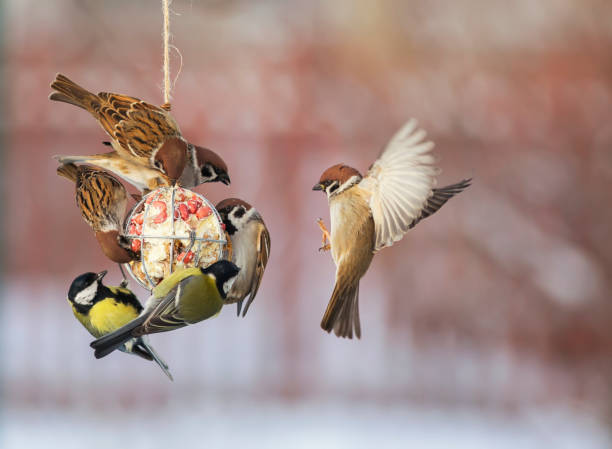This post contains affiliate links, meaning that I may receive compensation if you make a purchase through these links. As an Amazon Associate, I earn from qualifying purchases. This compensation does not influence the content, or recommendations provided. The opinions expressed are my own, and I strive to provide honest and unbiased information.
Updated September 12, 2025
Birdwatching, or birding as the cool kids call it, is one of the simplest yet most rewarding ways to connect with nature. Whether you’re a novice looking to explore your local park or a seasoned pro armed with top-tier binoculars, there’s always something new to discover in the world of birdwatching. From the cheerful chirping of songbirds to the majestic flight of raptors, birdwatching offers an endless array of entertainment, education, and peace.
So, grab your binoculars, put on a hat, and let’s dive into the wonderful world of birdwatching, where you never know what feathered friend you might meet next.
Why Birdwatching?
There’s something magical about observing birds in their natural habitat. Unlike zoos or animal parks, birdwatching gives you a front-row seat to the untamed beauty of wildlife without disturbing it.
Birds are everywhere—forests, beaches, your backyard—making this hobby accessible for everyone. Whether you’re in a bustling city or a quiet rural area, there’s always the chance to spot a unique species.
Trivia: Did you know that birdwatching is one of the most popular hobbies in North America, with an estimated 45 million birders? That means when you’re out there with your binoculars, you’re in good company!
The Essentials: What You Need to Get Started
Getting into birdwatching doesn’t require a massive investment. In fact, the basics are quite simple:
1. Binoculars – This is your most important tool. Look for binoculars with a magnification of 8x or 10x to ensure a clear view of birds, even at a distance. There are plenty of affordable options available online.
2. Field Guide – A field guide will help you identify the birds you spot. You can choose between a physical guidebook or a digital app that helps you record and categorize your sightings. Popular guides are available online, and many have high customer ratings.
3. Notebook and Pen – A classic birder’s accessory. Jotting down notes on the birds you see can help you improve your identification skills and keep a fun record of your birdwatching adventures.
4. Comfortable Clothing – Dress for the weather and wear comfortable shoes, especially if you’re hiking through the woods. And don’t forget a hat or sunscreen if you’re going to be outside for a while!
If you’re more serious about birding, investing in a camera with a good zoom lens can elevate your experience and give you the opportunity to capture stunning bird photography. Whether you’re just starting or upgrading your gear, there are tons of great birdwatching tools available on Amazon to fit every budget and level of experience.
The Art of Birdwatching: Patience, Practice, and Observation
Birdwatching is as much about being still and observant as it is about actually spotting birds. Birds are naturally cautious, so the key to success is blending into your surroundings and keeping noise to a minimum. Early mornings or late afternoons tend to be the best times to birdwatch, as birds are more active during these hours.
Seasoned birdwatchers know that location is everything. Different birds flock to different habitats, so research is key. Whether you’re visiting wetlands, forests, or your own garden, each environment will attract a different variety of birds.
*Pro Tip: Use your ears as much as your eyes. Birdsong can be one of the best indicators of a bird’s presence, and learning to identify birds by their calls is a skill that grows with practice. The Cornell Lab of Ornithology has an excellent app that can help you learn bird songs, making your birdwatching experience even richer.
Common Birds You Might Spot

For beginners, it’s helpful to know which birds you’re likely to see first. Here are a few common species found across North America:
1. American Robin – Easily identifiable with their orange chest and chirpy demeanor, robins are one of the most recognized songbirds.
2. Northern Cardinal – The males’ bright red feathers make cardinals one of the easiest birds to spot. They are also year-round residents in many regions.
3. Blue Jay – Known for their striking blue color and loud call, blue jays are common but always a treat to see.
4. Chickadees – These small, round birds are curious and often approach feeders, making them a frequent backyard visitor.
The more time you spend birdwatching, the more you’ll start to recognize rare species and seasonal migrators. If you’re lucky, you might even catch sight of a bald eagle or a peregrine falcon in flight!
Trivia Time: The smallest bird in the world is the bee hummingbird, which is just over 2 inches long! Now imagine trying to spot that during your birdwatching trips.
Advanced Birdwatching: Taking Your Hobby to the Next Level
Once you’ve mastered the basics, there are plenty of ways to elevate your birdwatching game. Here are a few ideas:
1. Join a Birdwatching Group – Many local communities have birdwatching clubs that organize group trips and provide invaluable knowledge to birders of all levels. Plus, it’s a great way to meet fellow bird enthusiasts.
2. Keep a Bird Journal – Start tracking the different species you see and note the date, location, and behavior of the birds. Over time, you might begin to see patterns in bird behavior based on the seasons or weather.
3. Contribute to Citizen Science – Platforms like eBird allow birdwatchers to log their sightings and contribute to important scientific research. Your birding hobby could actually help track species migration or conservation efforts.
Pro Tip: Birdwatching during migration seasons can be incredibly rewarding. Spring and fall migrations bring a flurry of activity, as birds travel thousands of miles to find new breeding grounds or warmer climates.
Attracting Birds to Your Yard

You don’t always need to go far to enjoy birdwatching. With a few simple adjustments, you can transform your backyard into a bird paradise. Here’s how:
1. Feeders – Set up a bird feeder filled with seeds, and you’ll likely see a range of species visit. There are many types of feeders available, including tube feeders for small birds and platform feeders for larger species.
2. Water – Birds need a fresh water source for drinking and bathing. Adding a birdbath or small fountain is an easy way to attract thirsty birds.
3. Shelter – Birds love safe, quiet places to nest. Planting native shrubs or adding birdhouses to your yard provides shelter for nesting birds.
4. Native Plants – Native plants offer food and shelter for local birds. These plants are often more resistant to local pests, providing a win-win for both birds and gardeners.
These small additions can turn your home into a year-round birdwatching spot. And with many bird feeders and accessories available online, it’s easier than ever to get started.
Final Thoughts: Birdwatching is for Everyone
Whether you’re a first-time birder or a seasoned expert, birdwatching has something for everyone. It’s a relaxing, fulfilling hobby that connects you with nature in a way that few activities can. Plus, it doesn’t take much to get started—just a good pair of binoculars, a bit of patience, and an appreciation for the feathered wonders of the world.
So, next time you’re sipping your morning coffee, why not grab your binoculars and head outside? You never know what birds are out there waiting to be discovered. And if you’re lucky, you might just catch a glimpse of something rare.
Trivia: Did you know that owls can turn their heads up to 270 degrees? That’s one way to make sure you never miss a thing!
For more on North American birds, read this companion article.




1 Comment
Pingback: Common Birds of North America: A Guide for Bird Lovers - SqueakersAndCatnip.com